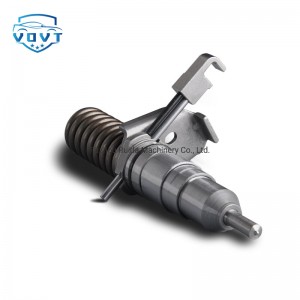Abstract
In modern diesel engines, the high-pressure common rail (HPCR) injection system plays a critical role in controlling fuel atomization and combustion efficiency. However, pressure fluctuations inside the injector nozzle significantly influence the spray breakup process, resulting in variations in droplet size distribution, cone angle, and penetration length. Understanding the coupling mechanism between nozzle pressure oscillations and spray breakup dynamics is essential for achieving stable fuel delivery, optimized combustion, and reduced emissions.
This study investigates the transient interaction between internal pressure waves and external spray formation in high-pressure injectors through computational fluid dynamics (CFD) and optical visualization experiments.
1. Introduction
During the fuel injection process, high-frequency pressure fluctuations arise due to needle motion, fuel compressibility, and reflected waves in the injector channel. These unsteady effects are transmitted to the nozzle orifices, affecting the local flow velocity, cavitation intensity, and fuel jet stability. The coupling between the internal pressure field and external spray dynamics remains one of the most complex and less understood phenomena in HPCR systems.
2. Methodology
A transient 3D CFD model of the injector was developed using the VOF-cavitation multiphase approach to capture the interaction between vapor formation and pressure wave propagation. Boundary conditions were set based on experimentally measured rail pressures of 180–250 MPa. In parallel, high-speed shadowgraph imaging was performed to visualize the spray breakup process under varying injection timings and back pressures. The internal pressure field data and external spray images were temporally synchronized using a laser-triggered acquisition system.
3. Results and Discussion
Simulation results indicate that pressure oscillations with amplitudes exceeding ±5 MPa can significantly alter the nozzle exit velocity distribution. These fluctuations intensify cavitation in the orifice, leading to asymmetric jet breakup and increased droplet size dispersion. Time–frequency analysis revealed that the dominant pressure wave frequency (~15–20 kHz) corresponds to the periodic oscillation of the needle valve. Experimentally, these oscillations were found to correlate with cyclic changes in spray cone angle and atomization quality. The pressure–spray coupling produced a phase lag of 0.2–0.4 ms between the internal pressure peaks and external jet response.
4. Conclusions
The findings confirm that nozzle pressure fluctuations in HPCR injectors directly govern the spray breakup dynamics through a coupled fluid–acoustic mechanism. Enhancing the damping characteristics of the fuel line and optimizing the nozzle geometry can effectively mitigate these fluctuations, improving atomization stability and combustion efficiency. Future work will focus on data-driven modeling of the pressure–spray coupling using machine learning and acoustic signal analysis to support real-time injector control strategies.





















